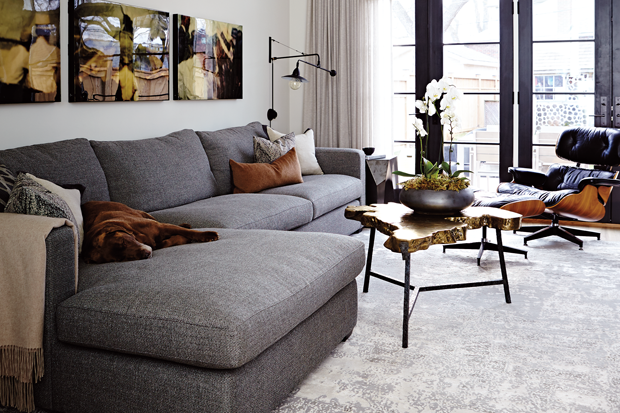Decorating & Design
November 8, 2016
Designer Tips: How To Buy A Sofa, Part Two

Assistant design editor Jennifer Koper shares expert advice on shopping for sofas.
 Now that you’ve decided what style of sofa you want, it’s time to think about quality. How a sofa is made directly impacts its longevity. If you’re looking to invest in a sofa that has staying power, here are some key things to think about, or ask a knowledgeable salesperson to discuss with you:
Now that you’ve decided what style of sofa you want, it’s time to think about quality. How a sofa is made directly impacts its longevity. If you’re looking to invest in a sofa that has staying power, here are some key things to think about, or ask a knowledgeable salesperson to discuss with you:
The frame: The best-quality sofas have frames made of kiln-dried hardwood, such as maple, oak or ash. Kiln-drying prevents wood from warping or cracking, and is an essential part of a sturdy frame. (You can also ask about a hardwood frame’s joinery; joints should be double-doweled and corner-blocked, screwed and glued). Other sofa frames can be made of softwood, particleboard, plastic or metal, but these can warp or crack. The tradeoff is a lower price tag.
The legs: Quality sofas’ legs are often part of the frame, adding to the stability of the sofa, but it’s also common to see just the back legs included in the frame, with the front legs screwing on. In other cases, all four legs screw on, which may come in handy if you have to get your sofa through a tight space.
The springs: High-quality sofas often feature “eight-way hand-tied” coils. This means coils are tied from the front of the seat to the back, side to side, and diagonally — eight times, by hand. Less expensive alternatives include a drop in coil units, a “sinuous spring” system (where springs form continuous “S” shapes from front to back) and polypropylene webbing (where seatbelt-material bands span from front to back). The key with either sinuous spring systems or polypropylene webbing is spacing: the distance between springs or bands should be no more than two inches for an evenly supportive surface.
Cushions: Cushions typically consist of foam bases wrapped in a polyester material called “Dacron,” which adds loft and ensures that cushion covers fit tightly. Other filling options include down or down-wrapped foam (the down envelope encasing the foam should be “channeled” so the down stays evenly dispersed). Whether Dacron or down-wrapped, the key to a foam cushion its density. You want a “high-density” foam to reduce degrading and sagging, 1.8 pounds or more per cubic foot, or a “high-resilience” foam, 2.5 pounds or more per cubic foot. Quick Tip: The density of foam doesn’t have any bearing on its actual firmness. Some suppliers will have options for firmer or softer foam with the exact same density — be sure to ask.
Provenance: You may want to ask if a sofa is manufactured in North America or overseas, as this can be a telling factor in terms of quality. It’s also great to support North American manufacturing.
The upholstery: Many sofas are available to order in a variety of materials and colors, so don’t let a showroom sofa’s upholstery distract you from its great shape or style. Things to keep in mind? Cotton and linen are beautiful natural materials, but can pill or stretch over time. A thicker fabric combats stretching, while a tighter weave reduces the possibility of snags (important if you have pets). Today’s polyester fibers are very durable, and can simulate the look of a natural fiber.
Whatever you do, focus on a fabric’s durability. A great way to check is by looking for its “double-rub count.” This number is determined by the Wyzenbeek method, an abrasion test that measures a fabric’s ability to withstand surface wear from rubbing. 15,000 rubs is very durable, while 30,000 is considered heavy-duty (anything under 15,000 should not be used as upholstery).
Leather is also a great option. There are many different types and quality levels, so be sure to find out how it will wear — some are scratch resistant, while others mar quite easily, giving you a very different look over time.
While these tips may sound technical, they will help you find a sofa that will be with you for years to come.
For more tips, see Part One and Part Three of this series.
Angus Fergusson
House & Home April 2016 issue
Cindy Bleeks

